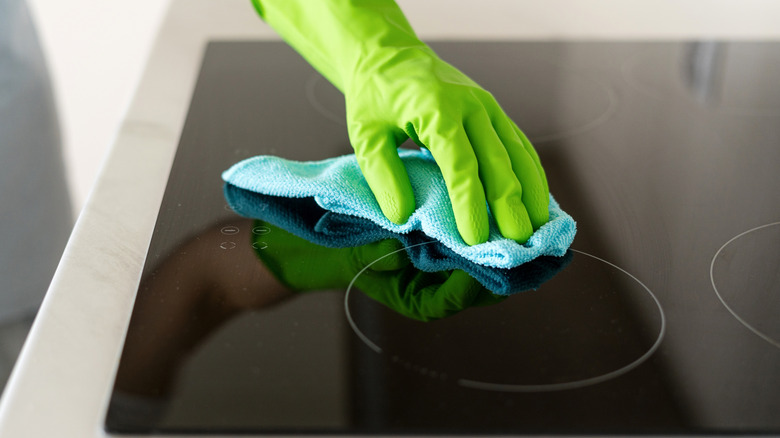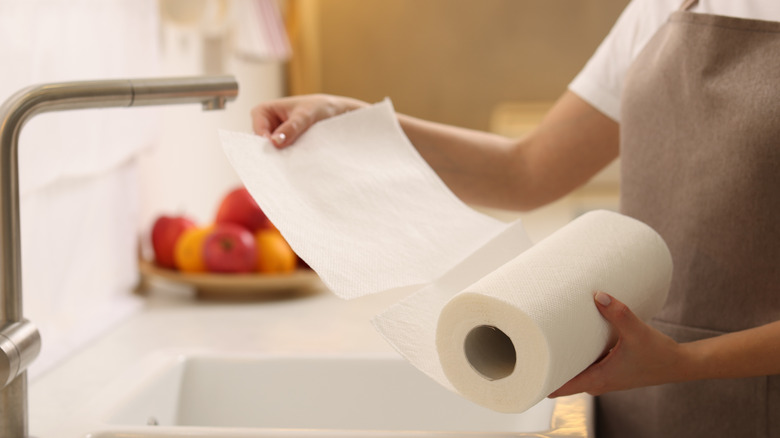The One Way You Should Never Clean A Glass Stovetop
Around 40 million American homes are equipped with gas stoves, accounting for more than 30% of residential cooktops in the country. However, the effects of natural gas-powered stoves continue to be hotly debated. For one thing, they contribute to commercial and residential greenhouse gas emissions that help drive climate change. Burning stoves can also emit a stronger concentration of carbon dioxide and nitrogen dioxide indoors, which can have outsized impacts on respiratory diseases.
As an alternative option to the gas-powered appliance, flat glass induction stovetops are safer to use indoors, more energy efficient, and offer good temperature control for faster cooking. They're also easier to clean with no burners to take apart, but you'll want to be careful not to clean yours using paper towels, no matter how convenient it seems. This is because ceramic-glass stovetops scratch easily, to the extent that you should only buy particular types of pans to avoid stovetop damage, and more abrasive paper towels can similarly leave marks.
With close-to-daily regular care, your glass stovetop should only need to be deep cleaned about once a year. Normally, after cooking, wait for your stovetop to cool before wiping off crumbs with a soft cloth, and then clean it using a sponge damp with warm, soapy water or diluted white vinegar. Burnt-on stains might require more effort, but you should never use ammonia-based cleaners, and it's worth being careful about what you use to wipe them down.
Why paper towels can be a problem with your glass stovetop
Paper towels are not necessarily softer than other household paper products, as you might expect from feeling them. In fact, paper towels are made from the same fibers as reams of printer paper, just mixed with specialized water-absorbent resins. Some paper towel brands will give you the best bang for your buck in terms of cleaning spills, but it's not the best material for your glass stovetop, potentially scratching up the glass-ceramic surface. It's similar to running a cast-iron, glass, or ceramic cookware across the surface or utilizing sharp tools or abrasive cleaning solutions. Wiping the stovetop down with soft cloths, such as microfiber, instead can avoid concerns from paper towel usage.
Once the costly glass stovetop is damaged, repairs — even for minor damages from a paper towel roll — are particularly expensive without a warranty. This may deter people from getting this type of stove, along with other factors. You may also need to rewire the electrical systems in your kitchen to get one running at a higher utility cost, and as mentioned, you can only use specific types of cookware containing ferrous iron (otherwise, your pans might not conduct heat). Still, they are a safer option than gas, and a glass stovetop can last you a long while with proper care and maintenance, including putting down the paper towels when it's time to clean.

